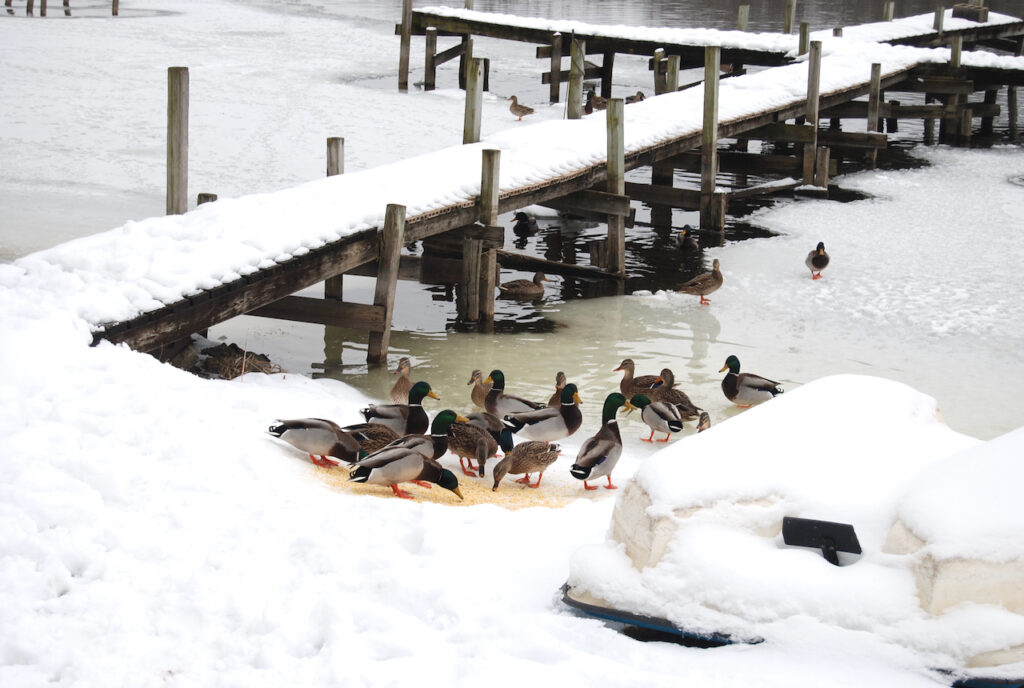The Wisconsin Department of Health Services (DHS) in a recent “alert” noted that while Highly Pathogenic Avian Influenza (HPAI) H5N1, also known as “bird flu,” has been confirmed in a poultry flock in Jefferson County, the risk of the infection spreading to humans is considered low.
The alert, which was released by DHS Wednesday, noted the following:
- HPAI H5N1 has been confirmed in a poultry flock in Jefferson County. The risk for human infection is considered low but increases among persons with direct contact with infected birds or their virus-contaminated environments.
- If fever or other new symptoms develop among exposed persons, respiratory specimens should promptly be sent to the Wisconsin State Laboratory of Hygiene for detection and subtyping. Local or rapid influenza tests should not be used for detection of avian influenza.
- If avian influenza infection is suspected, treatment with influenza antiviral medication should be initiated as soon as possible and not wait for test results.
- Antiviral chemoprophylaxis may be considered for exposed persons who are immunocompromised or at high risk of influenza complications.
Additionally, the alert noted, while HPAI H5N1 has been confirmed in a single Jefferson County flock, based on experiences with a similar virus during 2015 and in other states with the current virus, additional outbreaks might occur in Wisconsin poultry, backyard flocks or wild birds.
According to the alert: HPAI H5N1 virus contains a H5 gene of clade 2.3.4.4b and an N1 gene obtained from wild birds. The virus is the most common HPAI worldwide and is causing outbreaks among birds in Europe and parts of Africa and Asia.
The H5N1 is not the same virus that previously was associated with human illnesses and deaths and is not known to cause human illness or to spread from person to person. The risk for human illness resulting from contact with infected birds or their environments is considered low by the Center for Disease Control (CDC).
Based on genetic and in vitro analyses, no resistance to antiviral medications is expected, the alert continued.
However, rare human infections have occurred with similar H5 avian influenza viruses, and it is possible that bird-to-human transmission could occur. It’s also possible that viral mutations could occur to make transmission more likely. Thus, it’s important to recognize and treat human infection promptly to prevent further spread, and to characterize any virus that does infect humans, the alert stated.
Exposure
According to the alert, an exposed person is defined as a person with direct or very close contact (e.g., within the same building) to infected sick or dead birds in the past 10 days, or to infected flocks or their virus-contaminated environments up to three days before the birds became ill.
People who have had no close, prolonged, unprotected exposure to infected birds or their contaminated environments are thought to be at very low risk of infection. However, exposure situations other than described above should be considered on a case-by-case basis.
Clinicians should consider routinely asking patients about domestic and wild animal exposures regardless of the current HPAI situation. Wisconsin DHS epidemiologists are available for consultation regarding zoonotic diseases or exposures at 608-267-9003 or after hours at 608-258-0099.
Monitoring
As stated within the alert, exposed persons, including animal emergency responders, should monitor their own health for development of fever or other new symptoms, and get tested if they develop symptoms consistent with avian influenza. Symptom monitoring should occur during any ongoing exposure and for 10 days after the last exposure. Exposed persons should also be monitored daily by their organization’s safety officer and/or their local public health department until 10 days has passed from their last exposure.
Symptoms of human HPAI infection overlap with those of other conditions, including seasonal influenza and COVID-19, and may include:
- Fever (³100°F or ³37.8°C) or feeling feverish/chills
- Cough
- Sore throat
- Difficulty breathing/Shortness of breath
- Eye tearing/discharge, redness, or irritation
- Headaches
- Runny or stuffy nose
- Muscle or body aches
- Diarrhea (fever might not always be present)
Testing
All exposed persons who develop any new symptoms listed above should be tested for novel influenza A via rRT-PCR at the Wisconsin State Laboratory of Hygiene (WSLH), according to the release.
Influenza testing should not be performed via rapid test or at other laboratories, as these tests might not detect infection. The WSLH uses the CDC assay which detects influenza A(H5), seasonal influenza A and B, and SARS-CoV-2. Other diagnoses need not be ruled out first, but additional pathogen testing (e.g., respiratory viral panel) may be performed simultaneously using clinical discretion. Specimens should be collected as early as possible, and preferably during the first seven days of illness.
Requisition forms and testing supplies are available from the WSLH by calling Clinical Orders at 800-862-1088 or 608-224-4275.
Local health departments and/or DHS can assist with submission through the statewide courier system. Preferred specimens are 1) nasopharyngeal swab, 2) nasal aspirate or wash, or 3) nasopharyngeal or nasal swab combined with a separate oropharyngeal swab (2 swabs) in the same tube. Swabs should be made of a synthetic material (e.g., Dacron) with a plastic or aluminum shaft. Swabs should be put into tubes containing viral transport media.
According to CDC guidance, respiratory specimens should be collected outdoors or while using airborne infection control precautions. However, given the suspected low likelihood of human to human transmission, specimen collection using the usual precautions against transmission of SARS-CoV-2 is acceptable in settings where airborne precautions are not feasible.
Antiviral Chemoprophylaxis
Antiviral prophylaxis is not routinely recommended for persons exposed to infected birds or virus-contaminated environments. However, because the virus might act differently in persons who are immunocompromised, DHS recommends prophylaxis with a neuraminidase inhibitor for patients who were exposed within the previous 10 days and who have immunocompromising conditions such as:
- Active cancer treatment for tumors or blood cancers•
- Taking medications to suppress the immune system after organ or stem cell transplant
- Stem cell transplant within the last 2 years
- Primary immunodeficiency such as DiGeorge syndrome or Wiskott-Aldrich syndrome
- Advanced or untreated HIV infection
- Taking high-dose corticosteroids (e.g., prednisone) or other drugs to suppress the immune response
Additionally, the alert states, prophylaxis can be considered for persons who are at at higher risk of complications from influenza based on clinical judgement and taking into account the type of virus exposure (e.g., direct unprotected contact with infected birds or their contaminated environments, or known breaches in PPE during depopulation efforts).
If prophylaxis is started, CDC and DHS recommend using a treatment regimen (one dose twice daily) of an antiviral currently recommended for chemoprophylaxis. Recommended regimens (at adult dosages) include:
- Oral oseltamivir (Tamiflu): 75 mg twice daily
- Inhaled zanamivir (Relenza): 10 mg (two 5-mg inhalations) twice daily
- Note that oral baloxavir is also FDA-approved for influenza chemoprophylaxis, but to date CDC has not suggested a regimen for chemoprophylaxis of HPAI
If exposure was time-limited and not ongoing, five days of medication (one dose twice daily), from the last known exposure is recommended. For specific dosage recommendations for treatment by age group, please see Influenza Antiviral Medications: Summary for Clinicians. Physicians should consult the manufacturer’s package insert for dosing, limitations of populations studied, contraindications, and adverse effects.
Notification
All exposed persons who develop illness or who are being tested for avian influenza infection should be reported to DHS as a suspected case of novel influenza A (a Category 1 reportable condition) by calling 608-267-9003. Exposed persons are instructed to report any new illness to their healthcare provider, their Safety Officer (if applicable), and to public health.
Treatment
Prompt empiric treatment with influenza antivirals should not wait for laboratory confirmation. For outpatients with mild illness, CDC recommends treatment with a neuraminidase inhibitor (oral oseltamivir, inhaled zanamivir, or IV peramivir) or oral baloxavir. For hospitalized patients and outpatients with severe, progressive, or complicated infection, treatment with oral oseltamivir is recommended. Please see Influenza Antiviral Medications: Summary for Clinicians for more information.
Infection control recommendations are available at Infection Control Within Healthcare Settings for Patients with Novel Influenza A Viruses.
Vaccination
There is no vaccine available to protect against avian influenza H5N1 infection outside of a pandemic. However, annual vaccination against seasonal influenza remains recommended for everyone 6 months and older. Protection against seasonal influenza reduces the risk of possible avian and human influenza virus co-infection and reassortment.
For more information or to receive bulletins from DHS, visit: https://content.govdelivery.com/accounts/WIDHS/bulletins/310d0bc.

Wild ducks assemble along the shore of the Rock River where a meal awaits. File photo/Kim McDarison.
This post has already been read 1743 times!
